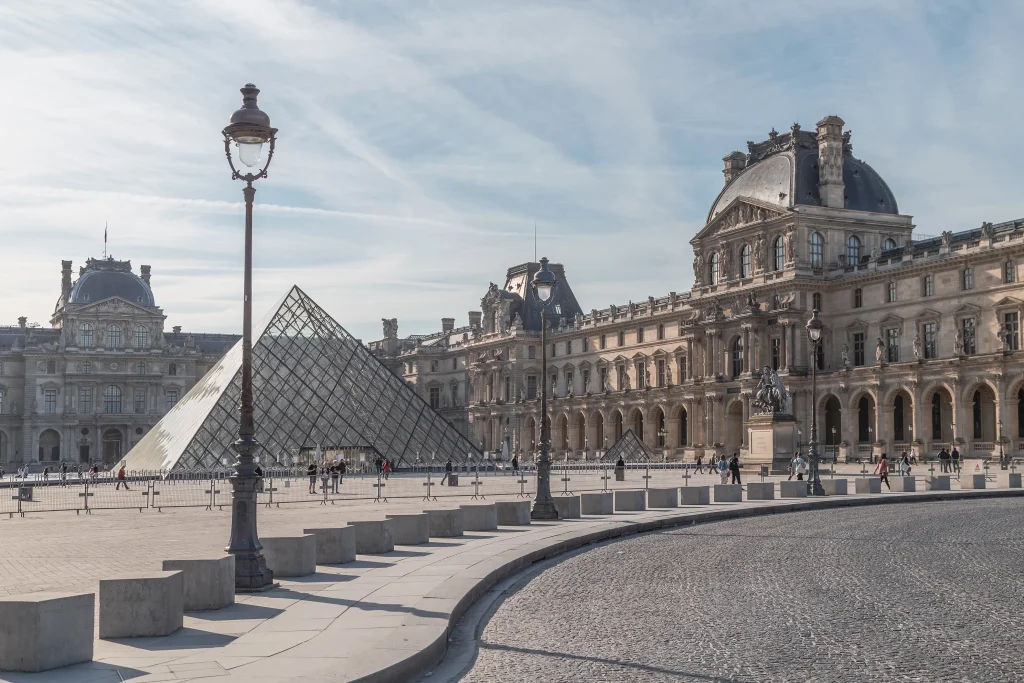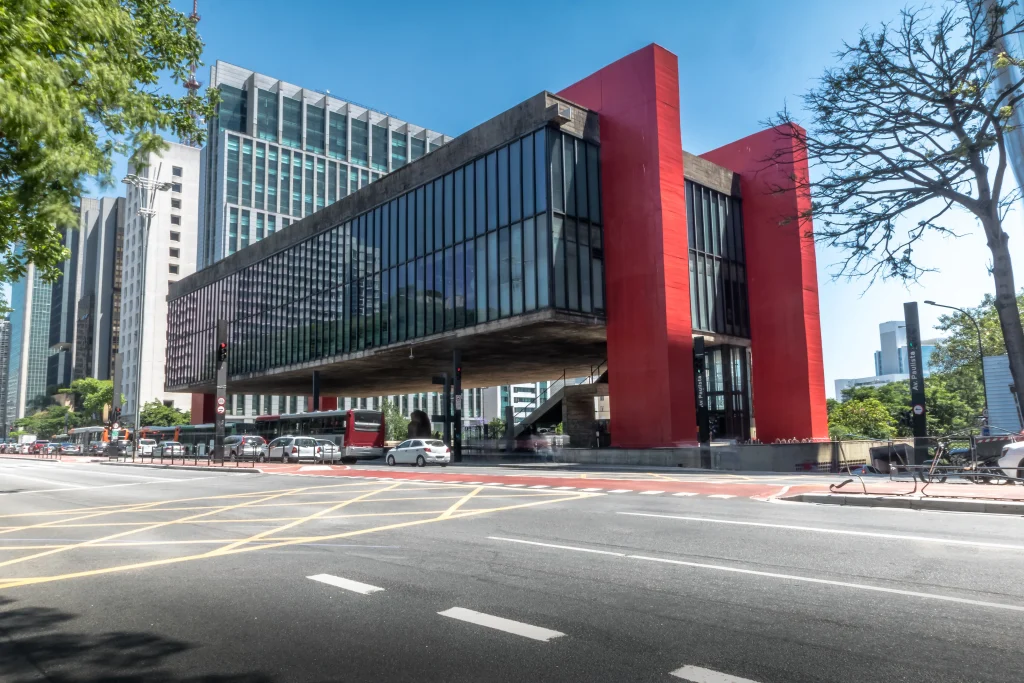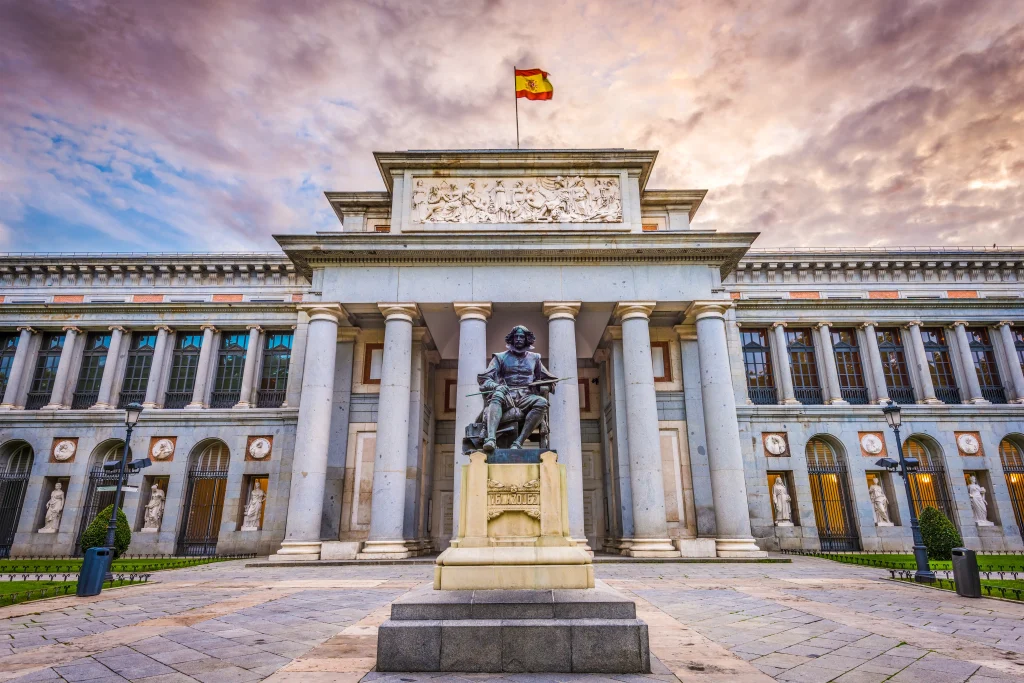Museums are fascinating hubs of cultural heritage, artistry, and historical significance, each offering a unique journey into the past and present of human civilization. In this blog post, we delve into the world’s most renowned museums!
The Louvre, France

The Louvre, a landmark in Paris, is one of the largest museums in the world, and attracts millions of visitors annually. The museum, established in 1793, encompasses a vast array of artifacts and artworks, ranging from ancient civilizations to the 19th century. Notable among its collection is the iconic Mona Lisa, Leonardo da Vinci’s masterpiece. The Louvre’s comprehensive archive spans diverse categories, including paintings, sculptures, decorative arts, and archaeological finds, making it a repository of culture.
Navigating the The Louvre, visitors encounter a chronological journey through the evolution of art and human civilization. From the imposing presence of the Venus de Milo to the intricate details of the Winged Victory of Samothrace, the museum’s main attractions are a testament to the range and depth of its holdings. Situated on the right bank of the Seine River, the museum serves as a cultural landmark not only for its monumental architecture but also for its role in preserving and showcasing artistic achievements over centuries.
While in Paris, art enthusiasts can plan a trip to Giverny, where the Monet Museum offers a captivating glimpse into the life and works of the renowned Impressionist painter Claude Monet. Booking a car in Paris provides the flexibility to go beyond the city limits, allowing travelers to immerse themselves in the serene landscapes that inspired Monet’s masterpieces. This optional side trip adds a layer of depth to the overall cultural experience, showcasing the interconnectedness of various artistic influences within the broader context of the Parisian cultural landscape.
The National Gallery, England
Situated in the heart of London, the National Gallery stands as a prominent cultural institution, housing an extensive collection of European paintings dating from the mid-13th century to the 1900s. The gallery’s main attractions include iconic works like Leonardo’s “The Virgin of the Rocks,” Van Gogh’s “Sunflowers,” and Rembrandt’s “Self Portrait at the Age of 34.” With over 2,300 paintings on display, the National Gallery offers a comprehensive survey of Western European art, providing a rational and methodical journey through the evolution of artistic styles and movements.
Beyond the impressive collection, the National Gallery stands out for its commitment to accessibility and education. The museum offers regular guided tours, lectures, and workshops, allowing visitors to engage with the artworks on a deeper level. The institution’s strategic location in Trafalgar Square makes it easily accessible, attracting both local and international visitors.
Museum of Modern Art, USA
Renowned for its extensive collection, the MoMA, in the heart of New York City, houses a diverse range of artworks, including paintings, sculptures, photographs, and multimedia installations. Notable masterpieces by iconic artists like Picasso, Van Gogh, and Warhol find a home within MoMA’s walls, making it a significant repository of 20th-century art. The museum’s commitment to showcasing cutting-edge artistic expressions is reflected in its ever-evolving exhibits, which often feature works by emerging artists pushing the boundaries of traditional mediums.
MoMA’s architectural layout and gallery design contribute to a streamlined and immersive visitor experience. The museum’s main attractions include its comprehensive collection of paintings from movements such as Cubism, Abstract Expressionism, and Pop Art. Additionally, MoMA is celebrated for its film department, hosting screenings of avant-garde cinema and documentaries. The museum’s dedication to education is evident through its diverse range of programs, workshops, and lectures that aim to engage visitors with the complexities of modern and contemporary art.
For those planning to explore the cultural landscape beyond New York City, a visit to the National Gallery in Washington, D.C. is a worthwhile addition! You can book a rental car in New York to embark on the journey to Washington, allowing you to transition from MoMA’s modern marvels to the National Gallery’s extensive collection of classical art and historical artifacts!
Museu de Arte de São Paulo, Brazil
In the realm of global museums, São Paulo’s Museu de Arte de São Paulo emerges as a prominent fixture, offering a distinct blend of artistic expression and cultural resonance. Founded in 1947, MASP stands as a testament to Brazil’s rich artistic heritage and serves as a hub for both local and international art enthusiasts. One of its most notable features is its architectural design, characterized by a striking modernist structure elevated on a series of red concrete pillars, a design choice that has become iconic within the city’s skyline.

The museum’s collection boasts an extensive array of artworks spanning various periods and styles, with particular emphasis on European art from the Renaissance to the contemporary era. Notable attractions include works by renowned masters such as Rembrandt, Van Gogh, and Picasso, offering visitors a comprehensive overview of Western art history.
Van Gogh Museum, Netherlands
The Van Gogh Museum in Amsterdam stands as a pivotal institution dedicated to the life and works of the renowned Dutch painter, Vincent van Gogh. Home to the largest collection of Van Gogh’s artworks globally, the museum provides an in-depth exploration of the artist’s evolution, showcasing over 200 paintings, 500 drawings, and 700 letters from Van Gogh himself. The museum’s chronological layout meticulously traces Van Gogh’s artistic journey, from his early years to his later, more iconic works, offering visitors a comprehensive understanding of the artist’s prolific career.
Among the main attractions within the Van Gogh Museum are some of the artist’s most celebrated masterpieces, such as “Sunflowers,” “The Bedroom,” and “Irises.” These works not only highlight Van Gogh’s distinctive style but also serve as key touchpoints for understanding the evolution of post-impressionist art in the late 19th century. Additionally, the museum’s emphasis on contextualizing Van Gogh’s art within the broader art historical landscape provides visitors with a nuanced perspective on the artist’s influences and contributions. Through its curated exhibitions, archival materials, and scholarly presentations, the Van Gogh Museum offers a comprehensive and rational exploration of the artist’s legacy, making it an indispensable destination for art enthusiasts and scholars seeking an analytical understanding of Vincent van Gogh’s enduring impact on the art world.
Prado Museum, Spain

Housed in the heart of Madrid, the Prado Museum stands as one of the preeminent cultural institutions globally, with an extensive collection of European art from the 12th to the early 20th century. Renowned for its impressive array of masterpieces, the museum serves as a testament to the evolution of artistic styles and movements over the centuries. The Prado’s collection boasts works from eminent artists such as Francisco Goya, Diego Velázquez, and El Greco, offering visitors a comprehensive overview of Spanish art’s historical and aesthetic development. From iconic paintings like Velázquez’s “Las Meninas” to Goya’s dark and introspective “The Third of May 1808,” the Prado Museum showcases a nuanced narrative of European artistry.
The museum’s layout is organized chronologically, facilitating a coherent exploration of the artistic progression throughout different periods. Visitors can witness the evolution of styles, techniques, and thematic elements as they move through the galleries. The Prado’s commitment to scholarly research and preservation is evident, with ongoing efforts to maintain and display its vast collection. Beyond the permanent exhibits, the museum often hosts temporary displays, lectures, and educational programs, contributing to its role as a dynamic cultural institution.
State Hermitage Museum, Russia
Boasting one of the largest and most diverse collections of art and artifacts in the world, the State Hermitage in St. Petersburg stands as a testament to the cultural richness and historical significance of its host city. With over three million items spanning a range of disciplines including painting, sculpture, archaeology, and numismatics, the museum offers visitors a comprehensive overview of human creativity and achievement throughout the ages.
Among its main attractions, the State Hermitage features masterpieces by artists such as Leonardo da Vinci, Rembrandt, and Michelangelo. Additionally, the museum’s vast collection of decorative arts, including intricately crafted Fabergé eggs and exquisite furniture, provides insight into the opulence of Russian imperial life. Beyond its permanent collections, the State Hermitage regularly hosts temporary exhibitions, scholarly conferences, and cultural events, further enhancing its appeal to both local and international visitors.
National Museum Of China, China
Located in Beijing, the National Museum of China stands as a testament to the country’s rich and complex past. The museum, inaugurated in 2003, consolidates artifacts from different periods, offering a comprehensive overview of China’s history. With over a million exhibits, the National Museum of China spans a vast array of topics, encompassing ancient artifacts, revolutionary memorabilia, and contemporary artworks. Notable attractions within its walls include artifacts from the Shang Dynasty, the impressive collection of Ming and Qing Dynasty porcelain, and the meticulous documentation of China’s modern history, notably the Cultural Revolution.
The museum’s architecture itself is a noteworthy feature, with its imposing facade and expansive exhibition spaces covering over 192,000 square meters. Renovated and expanded in recent years, the National Museum of China serves as a focal point for both domestic and international tourists seeking to gain a nuanced understanding of China’s cultural and historical evolution. The inclusion of interactive exhibits and multimedia installations further enhances the educational experience, offering a more engaging exploration of the nation’s multifaceted history.
The Uffizi Gallery, Italy
Established in 1581, the Uffizi Gallery in Florence stands as one of the oldest and most renowned art museums globally, showcasing an extensive collection that spans the Middle Ages to the modern era. The gallery, originally designed by Giorgio Vasari to house administrative offices (“uffizi” in Italian) for the Florentine magistrates, underwent a transformative evolution into a cultural treasure trove. Its main attractions encompass a vast array of masterpieces by Italian Renaissance artists, including works by Michelangelo, Leonardo da Vinci, Botticelli, and Raphael.
The Uffizi’s architectural grandeur and thematic arrangement contribute to a structured exploration of its holdings. Visitors often gravitate towards iconic pieces such as Botticelli’s “The Birth of Venus” and da Vinci’s “Annunciation.” The museum’s strategic layout, organized chronologically and thematically, allows for a coherent narrative that traces the development of artistic techniques and styles over centuries. In addition to its emphasis on Renaissance art, the Uffizi also features notable works from later periods, creating a comprehensive panorama of Italy’s artistic legacy.
The National Museum of Tokyo, Japan
The National Museum of Tokyo is a significant cultural institution with a robust collection and historical relevance. Established in 1872, it stands as Japan’s oldest and largest museum, offering a comprehensive insight into the nation’s rich heritage. The museum is organized into five separate buildings, each dedicated to a specific theme, including Japanese art, archaeological artifacts, and Asian cultural history.
One of the main attractions within the National Museum of Tokyo is the Honkan, or Japanese Gallery, which boasts an extensive display of traditional Japanese arts and crafts. Here, visitors can witness a diverse array of artifacts, including ancient pottery, samurai armor, and intricately crafted textiles. The museum’s Heiseikan building focuses on archaeological finds, showcasing artifacts from prehistoric Japan to the contemporary period. Additionally, the Toyokan building houses the Asian Gallery, featuring artifacts from across the Asian continent.
Frequently asked questions
What Is Considered The Best Museum in The World?
Identifying the best museum in the world involves subjective considerations shaped by diverse factors, including visitor interests and preferences. Some consistently esteemed museums renowned for their extensive collections, cultural significance, and historical importance include The Louvre in Paris, celebrated for its vast art collection; The National Gallery in London, recognized for its extensive art holdings; and MoMA in New York City, known for its comprehensive modern art exhibits.
What Is the World’s Most Visited Museum?
When it comes to the world’s most visited museum, The Louvre is widely acknowledged, boasting a remarkable annual visitor count and topping global attendance statistics. Situated in one of the world’s most visited cities, The Louvre attracts art enthusiasts and tourists alike, owing to its central location and unparalleled collection that spans centuries of human creativity and history.
What Is The Most Famous Museum in the World?
The title of the most famous museum is often bestowed upon The Louvre. Renowned for its vast and diverse collection, stretching from ancient civilizations to the 19th century, The Louvre’s historical significance, extensive holdings, and cultural prominence contribute to its widely recognized status as one of the most famous museums globally.
What Is The Most Important Museum in The World?
Determining the most important museum is also very subjective. Metrics like visitor numbers, collection size, and an institution’s role in preserving and exhibiting cultural artifacts contribute to its importance. Museums excel in various aspects, from art and history to science and technology, and global events, collaborations, and scholarly contributions can enhance their standing. Ultimately, the assessment of the most important museum depends on specific criteria and individual perspectives within the broader context of cultural and historical significance.







Leave a Reply